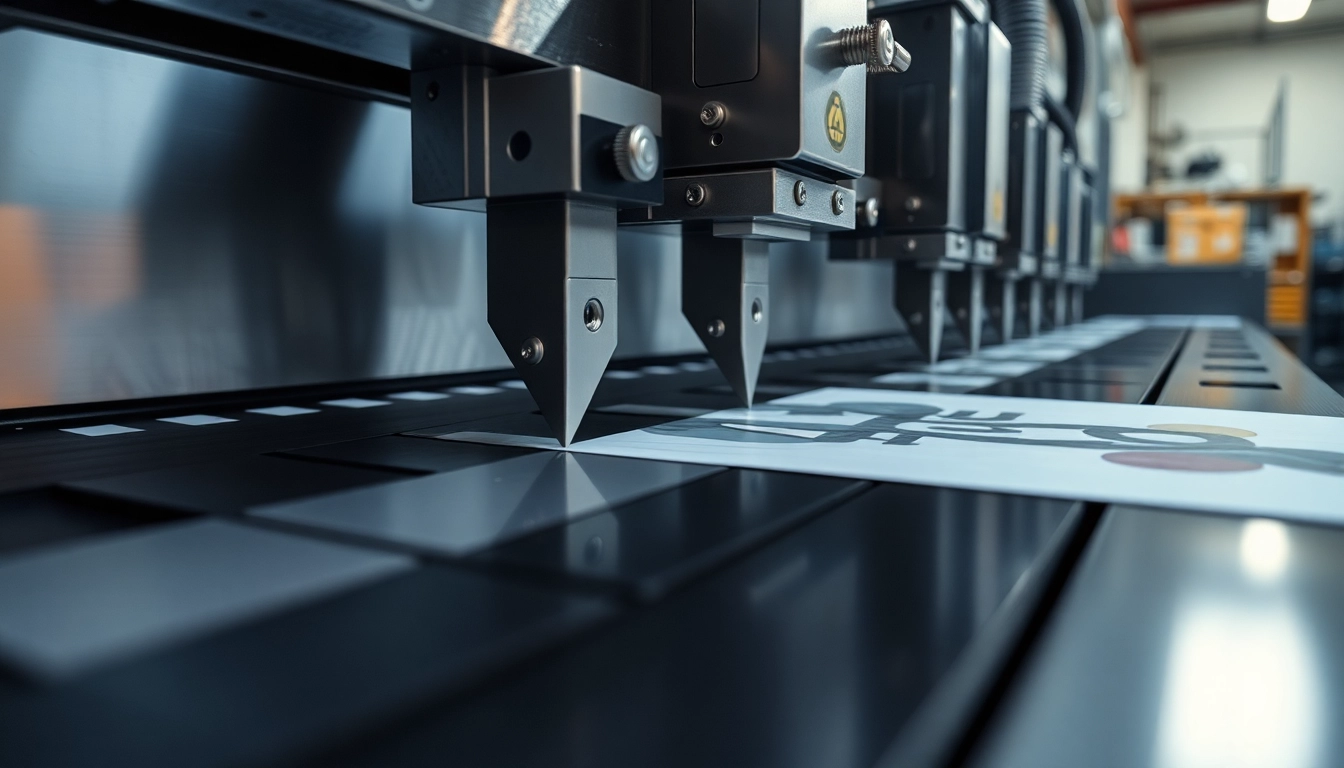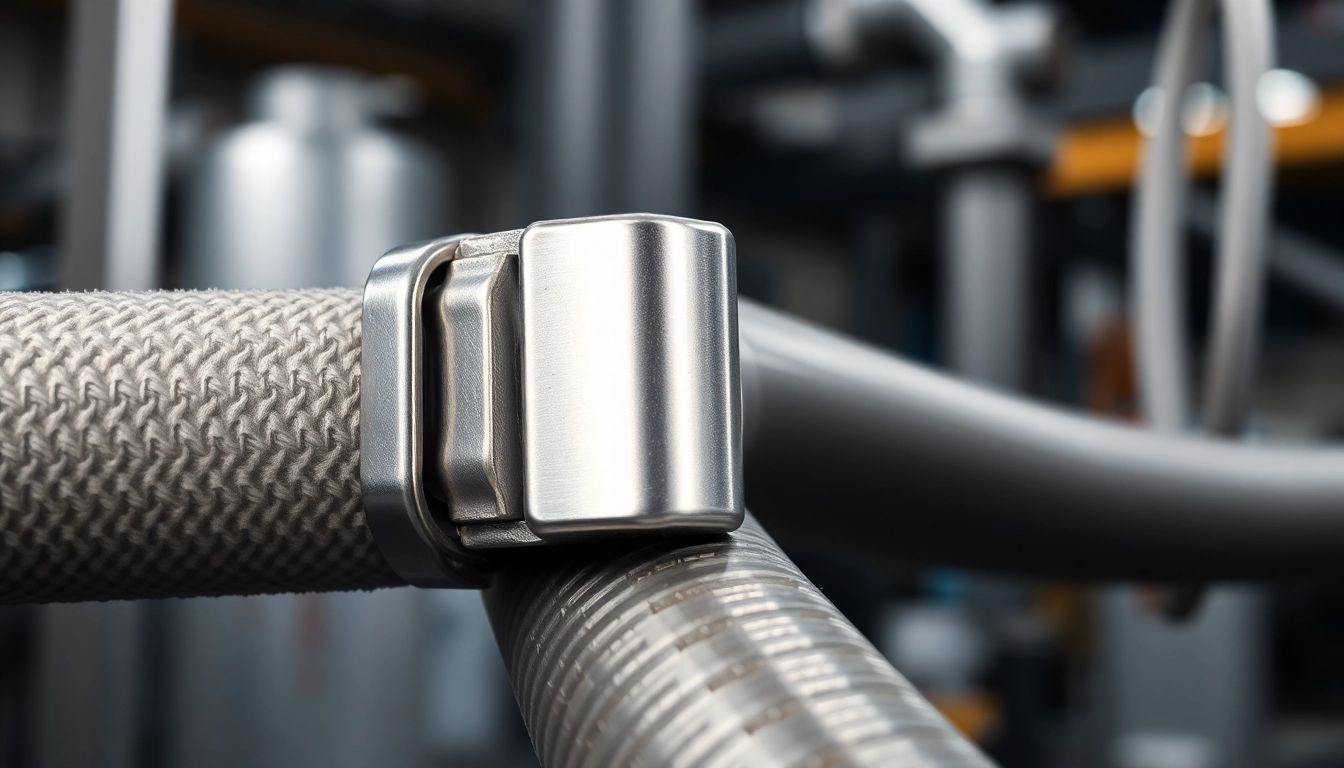Understanding Precision Die Cutting
Precision die cutting is a highly specialized method of cutting materials into specific shapes and sizes with pinpoint accuracy. It utilizes a mechanical process, often facilitated by a die, which is a specialized tool used for cutting the material into desired shapes. From creating intricate pieces for automotive applications to manufacturing custom labels, precision die cutting is indispensable across numerous industries. Understanding its various applications, techniques, and benefits is crucial for manufacturers looking to leverage this technology for competitive advantage.
What is Precision Die Cutting?
At its core, precision die cutting employs the use of sharp dies that are precisely shaped to cut through materials like paper, plastics, rubber, and metal. The process ensures clean, uniform edges and minimal waste, making it ideal for high-volume production. The precision aspect refers to the ability to adhere to very tight tolerances—often within ±0.005 inches—resulting in finished products that fit together seamlessly in assembly applications.
The die cutting process can be performed in several ways: flatbed die cutting, rotary die cutting, and laser die cutting, each with its own uniqueness, advantages, and limitations. Understanding these methods can guide manufacturers in selecting the best approach for their specific needs.
Applications of Precision Die Cutting in Various Industries
Precision die cutting is ubiquitous across a wide array of sectors. Here are some of the key industries where this technique achieves remarkable efficiencies:
- Automotive Industry: Components such as gaskets, seals, and insulation pads require precision die cutting to ensure proper fit and function.
- Medical Devices: The production of custom parts for surgical instruments and medical devices often relies on precision die cutting for its accuracy and consistency.
- Electronics: Die-cut parts like washers, and spacers used in electronic devices benefit from high precision to avoid malfunction.
- Packaging: Custom packaging solutions leverage die cutting for bespoke designs which improve both functionality and aesthetics.
- Textiles: Apparel and upholstery makers utilize this method to craft intricate patterns that enhance design.
Key Benefits of Precision Die Cutting
The advantages associated with precision die cutting are extensive, making it a preferred choice for many manufacturers seeking to enhance operations:
- High Accuracy: This method yields extremely precise cuts that meet specifications consistently.
- Reduced Waste: By maximizing material use, precision die cutting minimizes scrap, making it economically beneficial.
- Variety of Materials: Precision die cutting can be employed with various materials, accommodating diverse production needs.
- Speed: Once the dies are created, the process can run at high speeds, significantly boosting output rates.
- Customization: Custom dies can be designed for unique shapes, allowing flexibility in product design.
Types of Precision Die Cutting Techniques
The die cutting process can be categorized into various techniques, each serving unique manufacturing needs:
Flatbed Die Cutting Explained
Flatbed die cutting involves a hydraulic flatbed press where a rectangular or square die presses against the material to cut it into specified shapes. It is ideal for larger sheets and can handle a variety of materials, including thicker substrates. However, the setup time is longer due to the heavier dies involved and the need for precise alignment.
Rotary Die Cutting Advantages
Unlike flatbed die cutting, rotary die cutting employs cylindrical dies that continuously rotate, allowing for longer runs and quicker setup times. This method is particularly beneficial for high-volume production of smaller parts—making it a popular choice in industries like food packaging. The rotary process enables faster speeds and reduces material waste due to fewer start-up scrap pieces.
Laser Die Cutting: A Modern Approach
Laser die cutting uses focused laser beams to cut materials with extreme precision, achieving intricate details that may not be possible with traditional methods. The technology is especially useful for prototyping and short production runs, as it eliminates the need for physical die creation. This flexibility allows for rapid design iterations and adjustments, making it ideal for industries that thrive on innovation.
Choosing the Right Die Cutting Material
The choice of material for die cutting critically influences the efficiency of the process, the quality of the end product, and the overall costs. Understanding the properties of different materials helps manufacturers to make informed decisions.
Common Materials Used in Precision Die Cutting
The materials commonly used in precision die cutting include:
- Paper and Paperboard: Widely used for packaging, labels, and various consumer goods.
- Plastics: Such as polycarbonate, acrylics, and PVC, are prevalent in the automotive and electronics sectors.
- Foam: High-density and low-density foams are often cut for insulation and cushioning applications.
- Metals: Thin sheets of metal can also be die-cut, though this typically needs specialized rotary techniques.
Material Properties Impacting Die Cutting
When selecting materials for precision die cutting, consider properties such as:
- Thickness: Determines the type of die and cutting method that can be used and affects how easily the material can be cut.
- Durability: Some materials are better suited for high wear applications, offering longer lifespans.
- Flexibility: Flexibility can affect how well materials can be handled and manipulated during the cutting process.
- Heat Resistance: Important for processes that involve high temperatures, especially in laser cutting applications.
Cost Considerations for Different Materials
The choice of materials will affect the overall cost of a precision die cutting project. Higher quality materials may incur greater upfront costs but can provide better performance and longer lifespans, leading to cost savings over time. Additionally, the compatibility of the material with the chosen die cutting method plays a role in determining total production costs.
Best Practices for Successful Die Cutting Projects
To maximize the efficiency and effectiveness of precision die cutting, manufacturers should adhere to best practices throughout the project lifecycle:
Designing for Precision in Die Cutting
Product designs should account for die cutting parameters from the outset. This includes considering the recommended tolerances and designing shapes and angles that accommodate the capabilities of the cutting method being employed. Early collaboration with engineers and designers can foster a smoother transition from design to production.
Testing Tolerances and Quality Control
Establishing tolerance levels is crucial to ensure that the final product meets the required specifications. Regular testing and quality control checks during production can help catch deviations early and maintain consistent quality levels, which is essential for high-stakes applications like medical device manufacturing.
Managing Production Times with Precision Die Cutting
Developing a clear timeline that outlines each phase of the die cutting process can aid in managing production times. Factors such as die creation, testing, and material acquisition should be accounted for early, as delays in any area can affect overall production schedules.
Innovation in Precision Die Cutting Technologies
The landscape of precision die cutting is continually evolving with technological advancements. Staying informed about these developments can vastly enhance production efficiency and product quality.
Recent Advances in Die Cutting Machinery
Recent innovations include smart machinery equipped with AI and machine learning capabilities that optimize cutting processes, monitor production in real-time, and adjust parameters automatically. These advancements lead to reduced downtime and increased output. Furthermore, improvements in die materials and designs have significantly enhanced durability and precision.
Automating the Precision Die Cutting Process
Automation is transforming die cutting operations, with robotic arms now being employed to handle materials, load and unload machines, and even perform quality checks post-production. This integration not only boosts efficiency but also minimizes the risk of human error, particularly in high-volume operations. Moreover, manufacturers can see reduced labor costs and increased production rates as a result.
The Future of Precision Die Cutting: Trends to Watch
Looking ahead, trends such as sustainability and eco-conscious manufacturing are likely to influence precision die cutting techniques. There will be a growing demand for recycled materials and more sustainable production practices. Additionally, technologies like 3D printing and increased customization will be factors to consider, as they may integrate more seamlessly with die cutting processes, providing manufacturers flexibility and efficiency.



